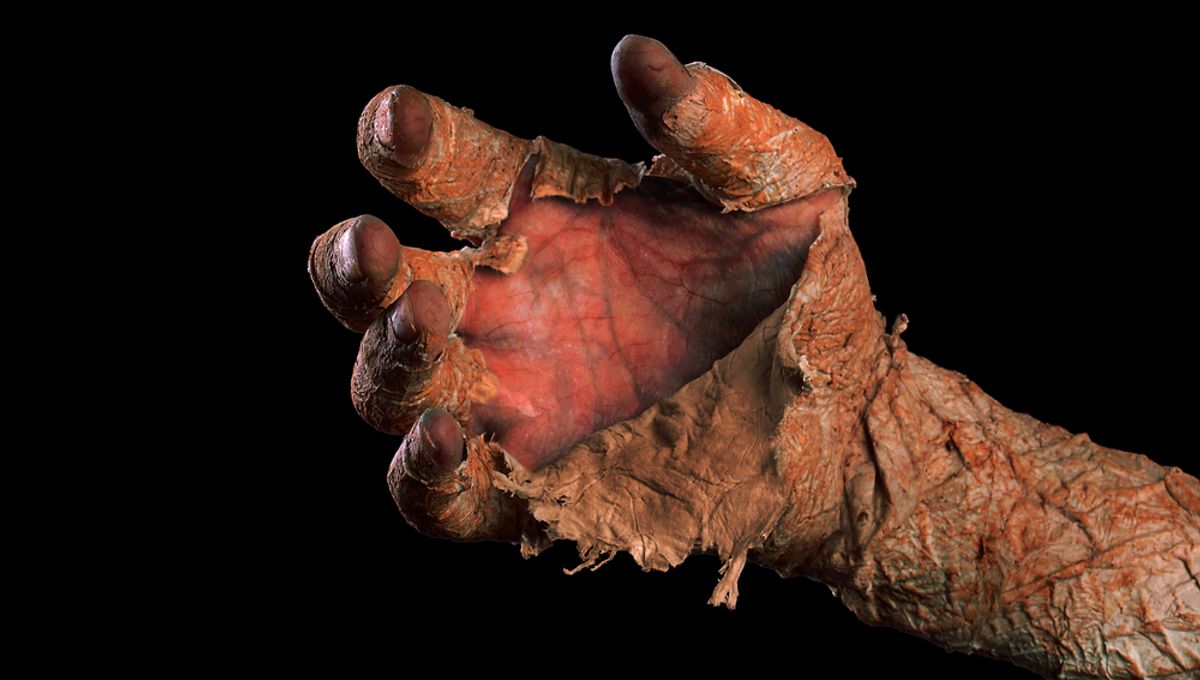
A man in Bulgaria has been found in a “stage of complete mummification” just 16 days after last being seen alive. Describing this incredibly rare occurrence, the authors of a new case report say that the dead man’s brain, guts, and other organs had shriveled up into “structureless masses”, yet are unable to explain how the corpse reached such an advanced state of mummification in such a short time.
According to the researchers, the body was found beside a railway line in Sofia on September 3. Police later confirmed that the remains belonged to a 34-year-old man with a history of alcoholism who had not been seen since August 16, just over two weeks earlier.
Describing the state of the mummified corpse, the authors reveal that “the skin surface showed coloration ranging from light to dark brown, and it was hard and leathery.” There are also pictures of the corpse available in the paper for those who want the option to see, but as a heads up, they might not make easy viewing.
“The internal examination of the body showed that the internal organs in the cranial, thoracic, and abdominal cavities had decayed into dried, brownish-black masses,” they continue.
Baffled by the unusual state of the remains, the researchers say that natural mummification “is a time-consuming process and usually takes several weeks to 6-12 months.” Such a transformation is typically only possible under conditions of extreme heat and dryness, with daytime temperatures not dropping below 30 degrees Celsius (86 degrees Fahrenheit) and average humidity remaining below 50 percent.
Levels of solar radiation of about 600 Watts per meter squared (56 Watts per square foot) are also necessary for natural mummification to occur, while wind speeds of around 32 kilometers per hour (20 to 30 miles per hour) help to accelerate the process. When all of these conditions are met, it may be possible for a dead body to dry out rapidly enough to halt the decomposition process, leading instead to preservation.
However, during the 16 days between the man’s death and the discovery of his mummified corpse, the temperature in Sofia fluctuated between 16 and 33 degrees Celsius (60 to 91 degrees Fahrenheit), thus falling outside the range required for natural mummification. Relative humidity, meanwhile, was recorded at 52 percent, while average solar radiation was just 257.9 Watts per meter squared (24 Watts per square foot).
Wind speeds were also far below the value needed for mummification to occur, although the authors speculate that passing trains may have helped to create windy conditions that could have contributed to the evaporation of fluid from the body.
Overall, though, it clearly wasn’t mummy weather in Sofia during the second half of August, which makes it somewhat difficult to explain how the man became so dry and leathery when he should have been rotting.
The study is published in the journal Cureus.
When bodies are left exposed to the elements, a complex series of processes lead to the total dissolution of soft tissues and internal organs, which is why it’s typically more common to find skeletons than mummies. We’ll be talking to a forensic expert about the decomposition ecosystem that makes it possible at CURIOUS Live, IFLScience’s free virtual event taking place on October 21, 2023. Click to find out more and secure your spot.
Source Link: Man Found Naturally Mummified Just 16 Days After Last Being Seen Alive